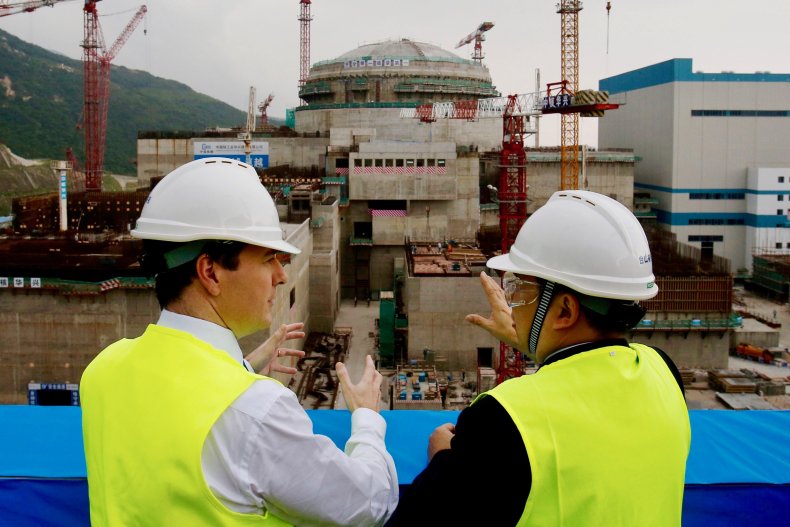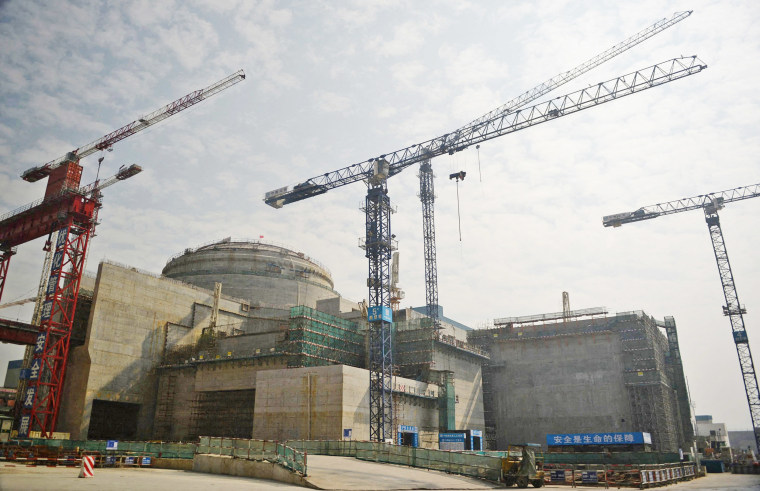Chinese Foreign Ministry spokesman Zhao Lijian said there were no signs of extraordinary nuclear radiation around the Taishan nuclear plant.
He dismissed reports of hazardous gases leaking from the plant. Stating the safety of the people is guaranteed.
It is known that the French company Framatome, a partner, has revealed that the Taishan nuclear plant is emitting dangerous gas.
As a result, the French company sought America’s help to solve the problem. U.S. experts have warned that gas leakage could become a major disaster if not prevented.
Read More: Taishan Nuclear Plant Facing Problem China Works To Fix The Issue

The Hong Kong government said it had looked at the facility and asked the Guangdong officials for details following a spike in “noble gases” in the reactor reported by their French co-owner on Monday.
Specific experts indicated that fuel rods were broken, and the nuclear fission-created radioactive gas was spilled.
Fiscal byproducts and cesium particles, strontium, and other radioactive elements are noble gases, such as xenon and krypton.
The Ministry has reported that the protective shell of roughly five fuel rods out of the reactor is damaged.
It stated that such damage was inevitable because of manufacturing defects and other issues and that the facilities were significantly below the level intended for handling them.
The Government stated that authorities would monitor radiation levels within the reactor but did not provide details.
Taishan nuclear plant is owned by China Guangdong Nuclear Power Group and Electricité of France that commenced commercial operations in December 2018. In September 2019, the second reactor started functioning.

United Nations International Atomic Energy Agency issued a statement on Wednesday “The reactor’s ‘containment integrity is maintained’ and ‘there is no environmental risk,”
China is one of the leading users of nuclear energy. Currently, very few other governments are planning new facilities, while China is building additional reactors because solar, wind and other alternatives are falling.
Chinese politicians view nuclear power as a means of reducing air pollution and demand for oil and gas imports, which they regard as a risk to safety.
According to the World Nuclear Association, China has 50 active reactors and is planning to build another 18.
China has built reactors based on France, the United States, Russia, and Canada technology. State-owned firms have also created and commercialized their own reactor to abroad countries.

Hong Kong receives as much as one-third of its electricity from the Daya Bay nuclear power facility east of the Guangdong region. In addition, plans call for Hong Kong to make further use of atomic energy in continental countries to shut down coal-fired power plants.
The National Nuclear Safety Administration reported on its website that previously, Taishan nuclear plant discharged a “small amount” of radioactive gas on April 9. However, the occurrence was declared to be “level 0” or “without importance for safety.”
Also Read: Naftali Bennett Takes Oath As Israel’s New PM Benjamin Netanyahu Ousted
Discover more from Thenewsdoor
Subscribe to get the latest posts sent to your email.





